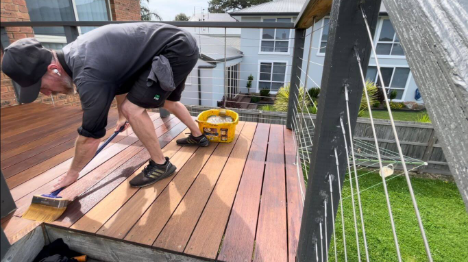Have a wooden deck and it is getting a little tired or faded? Be it a car, a bike or a scooter, when you are going to preserve it with age and look sharp, a proper sealing might be the difference. Good quality oil based sealer will not only stay on top; it will penetrate through the wood and will guard against destructive elements deep within the wood. What is the best thing about it? It does not require you to be a pro to do it. We will discuss this gradually using simple and straightforward words.
What are the Reasons for Using Oil-Based Sealers?
As opposed to surface sealer, oil-based outdoor wood sealer permeates into the wood grain. That implies a greater resistance to moisture, sunlight, dust, and the fluctuations in temperature. Moreover, they bring the wood back to life and make it look good.
Here’s what makes them a favorite choice:
- They last longer than water-based versions
- The finish looks smooth, not shiny or fake
- Stops water from sneaking into cracks
- Works well in both hot and rainy seasons
What You’ll Need
Don’t overcomplicate it. Grab these few things before you begin:
- A quality oil-based wood sealer
- A paintbrush or roller
- Some old rags or cloths
- Rubber gloves
- A stick for stirring
- A broom
- Mild wood cleaning soap
- A hose or light-pressure washer
Step 1: Clean and Clear the Surface
Clear off the deck-chairs, pots… all the welcome mat. Sweep it all well adjust it and… If the surface is dusty or stained clean it with a wood-safe detergent and a scrub brush. Be the clement if you make a washing machine, wood can be soft. After that wash it and then let it sit just to dry. It may take about 24 hours.
Step 2: Pick the Right Weather
This isn’t something you want to do just before a storm or on a humid afternoon. Choose a dry, clear day—not freezing cold, not blazing hot. Once applied, the sealer needs a good 48 hours without any rain to do its job right.
Step 3: Stir, Don’t Shake
Open the sealer and stir it slowly using a stick. Shaking causes air bubbles, and bubbles lead to streaky finishes. Stirring keeps the liquid even and helps it apply better.
Step 4: Start Applying the Sealer
Use a brush or roller to begin. Always go with the grain of the wood, not against it. Start at one end and work your way across. Don’t drown the boards—spread it out evenly in a thin coat. Use a smaller brush for corners or tight spots.
Step 5: Wipe Extra and Check It Over
Once everything’s coated, look around. See any wet-looking or glossy spots? That means the wood didn’t absorb it all. Just grab a dry cloth and wipe off the extra. This helps keep the deck from getting sticky later.
Step 6: Let It Sit and Dry
Now, leave it alone. Don’t walk on it. Don’t move furniture back yet. Wait at least one full day. And, provided there is time, keep it a few days. This provides time to the sealer to dry and seal the protection.
Keeping the Deck in Good Shape
Want the deck to stay solid and sharp-looking? Here’s what to do:
- Sweep regularly
- Clean spills fast
- Don’t drag stuff across the surface
- Reseal it every 12 to 24 months
Common Mistakes to Avoid
- Never seal wood that’s damp
- Don’t use dirty or stiff brushes
- Avoid thick coats—it doesn’t help
- Don’t rush the drying time
Final Word
Sealing your deck isn’t hard—it just takes care and a little patience. You don’t need fancy gear or expensive help. Just a quiet afternoon, the right sealer, and some time to do it right.
If you want a top-tier result, go with something dependable like HempShield. It’s easy to apply, lasts a long time, and makes your wood look new again.

